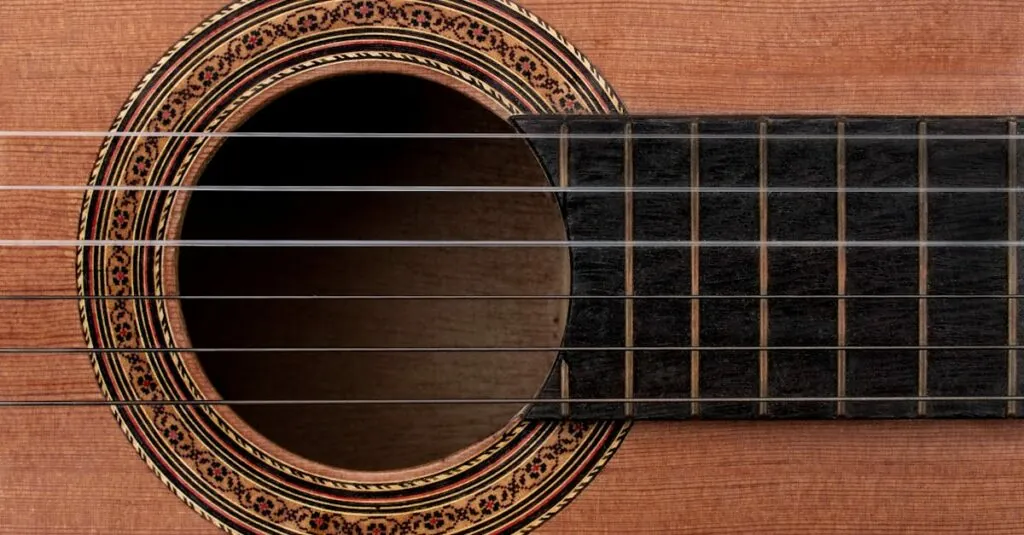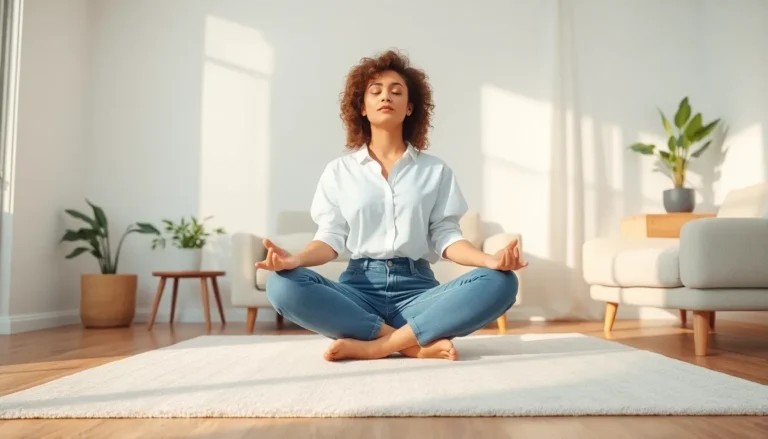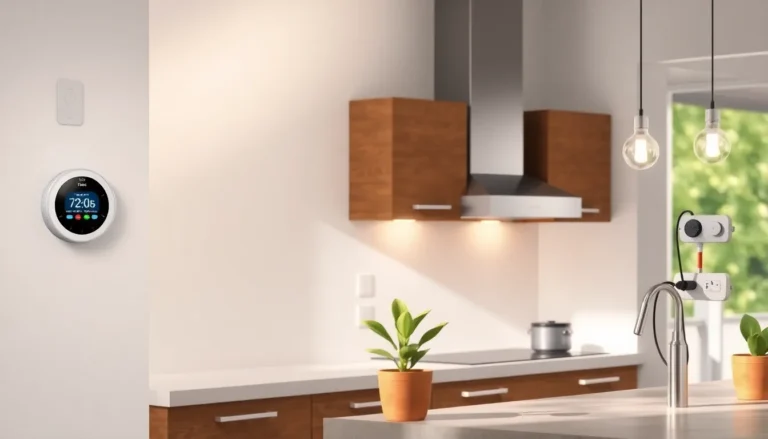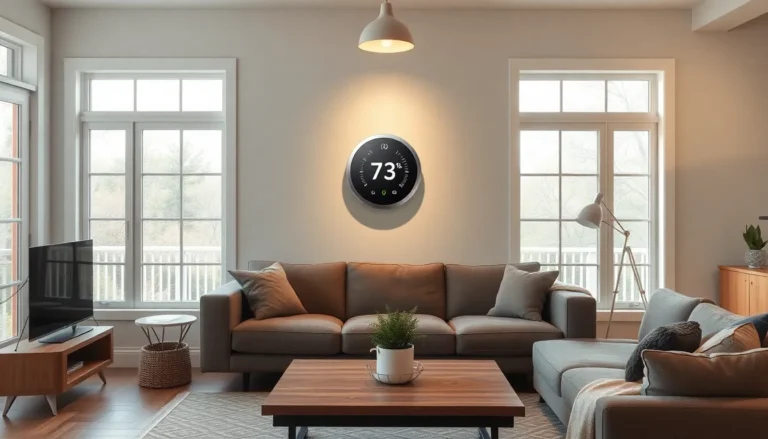Table of Contents
ToggleIn a world flooded with fleeting trends and flashy fads, classic design concepts stand tall like a well-tailored tuxedo at a beach party. They’re the timeless principles that never go out of style, proving that sometimes less really is more. Whether it’s the elegance of symmetry or the charm of minimalism, these concepts effortlessly blend function and beauty, making spaces feel like home.
Overview of Classic Design Concepts
Classic design concepts focus on principles that withstand the test of time. Symmetry serves as a hallmark, creating balance and unity in spaces. Minimalism emphasizes simplicity, eliminating unnecessary clutter and highlighting essential elements. Functionality remains integral, ensuring every feature offers practical use without compromising aesthetics.
Color palettes often consist of neutral tones combined with rich accents, creating warmth and comfort. Natural materials such as wood, stone, and metal enhance durability while bringing a sense of authenticity to the design. Architectural details, including crown molding and wainscoting, contribute to a sophisticated yet inviting atmosphere.
Proportions matter in classic design. Sculptural forms and elegant lines guide the eye, making spaces feel cohesive. Textures introduce depth, contrasting smooth surfaces with rough finishes to engage the senses. Lighting plays a vital role; soft, ambient lighting enhances the cozy feel of a room while showcasing key design elements.
Incorporating classic furniture pieces nurtures a sense of history and continuity. Key items, like a Chesterfield sofa or a mid-century coffee table, reinforce timeless appeal. Art and décor reflect personal expression, offering opportunities to infuse individuality into classic settings.
Ultimately, classic design concepts create environments that feel both current and timeless. They prioritize comfort, beauty, and functionality, establishing long-lasting spaces that adapt to changing lifestyles without losing their charm. Through these principles, timeless elegance becomes accessible in contemporary interiors.
Key Characteristics of Classic Design
Classic design concepts reflect enduring elements that stand the test of time. These principles blend aesthetics with functionality in a way that remains relevant across generations.
Timelessness
Timelessness defines classic design, making it versatile and enduring. Elements popular decades ago continue to grace modern spaces. Features like symmetrical layouts and elegant proportions provide stability and balance, appealing to various tastes. Classic design avoids trends that quickly fade, focusing instead on enduring appeal. This approach ensures spaces remain aesthetically pleasing long after their creation, fostering a sense of permanence.
Simplicity
Simplicity serves as a cornerstone of classic design. Cleaner lines and minimal clutter create a calming atmosphere. Essential elements are highlighted while distractions are removed, promoting visual clarity. Simplistic color palettes, often rich yet neutral, enhance this aesthetic without overwhelming spaces. With its emphasis on functional beauty, simplicity invites comfort and elegance into homes, making environments feel inviting and timeless.
Popular Classic Design Concepts
Timeless design principles resonate deeply in classic aesthetics. Designers and homeowners often prioritize key concepts like minimalism, symmetry, and typography.
Minimalism
Minimalism emphasizes simplicity and functionality in classic design. This approach eliminates unnecessary elements, focusing on essential features instead. Open spaces create a serene environment that promotes ease and comfort. Achieving this aesthetic requires a careful selection of a few meaningful decor items that enhance rather than overwhelm. Clean lines and neutral color palettes contribute to clarity, creating a tranquil atmosphere throughout the space. Remaining grounded in practicality, minimalist designs encourage thoughtful arrangements and placements, ensuring that every piece has a purpose.
Symmetry
Symmetry fosters balance and unity in classic design. It creates a sense of order that naturally draws the eye to key features. Designers often place identical objects or utilize mirrored patterns to create visual harmony. This principle promotes a cohesive feel, especially in layouts where central focal points guide attention. Architectural elements, such as evenly spaced windows or fixtures, reinforce this aesthetic, promoting a structured and elegant environment. By incorporating symmetrical details, spaces exude timeless elegance, appealing to those who appreciate refined design.
Typography in Classic Design
Typography plays a vital role in classic design, influencing the overall character of a space. Font choices can convey a sense of tradition or modernity, depending on the context. Designers often select serif fonts to evoke classic charm, while sans-serif fonts might suggest a more contemporary feel. Typography should harmonize with the overall aesthetic, ensuring that text complements the design rather than distracts. Thoughtful integration of typography, such as in signage or artwork, enhances visual interest and reinforces the theme. Consistency in font usage across various elements creates a unified appearance, further solidifying the classic design ethos.
Influence of Classic Design on Modern Trends
Classic design concepts significantly shape modern trends. Timeless principles, like symmetry and minimalism, find their way into contemporary interiors, fostering an appreciation for balance and simplicity. Symmetrical layouts inspire new designs that evoke a feeling of stability while enhancing visual appeal.
Minimalist approaches streamline aesthetics by focusing on essential elements and reducing clutter. Clean lines characterize many modern spaces, showcasing how simplicity elevates overall elegance. As a result, the emphasis on functionality remains paramount, ensuring that each design feature serves a practical purpose.
Natural materials, such as wood and stone, experience a resurgence in popularity. Their durability and authenticity resonate well in modern settings, blending seamlessly with classic design themes. This choice of materials enhances warmth and connection within spaces, inviting a sense of comfort.
Lighting choices reflect classic design’s influence too. Soft, ambient illumination creates inviting atmospheres, emphasizing key architectural details and furniture pieces. Incorporating classic furniture styles complements modern trends, linking history with contemporary living.
Art and décor elements draw inspiration from classic aesthetics, allowing for personal expression while maintaining a cohesive look. Typography also plays a crucial role, with specific font choices enhancing the character and unity of the overall design. Classic and modern styles blend harmoniously, creating environments that prioritize comfort, beauty, and utility.
Overall, modern trends continue to reflect the lasting impact of classic design principles. They adapt to changing lifestyles while preserving the charm and elegance that timeless concepts provide, ensuring a balanced blend of past and present.
Classic design concepts remain a powerful influence in today’s interiors. Their timeless principles foster environments that blend beauty and practicality seamlessly. By emphasizing symmetry and minimalism, these designs create spaces that feel inviting and harmonious.
The focus on simplicity and functionality ensures that each element serves a purpose, enhancing the overall aesthetic without overwhelming the senses. As modern trends continue to evolve, the enduring appeal of classic design principles offers a sense of stability and elegance.
Incorporating these timeless concepts into contemporary settings not only honors the past but also enriches the present. Classic design is more than just a style; it’s a philosophy that celebrates the art of living beautifully.







